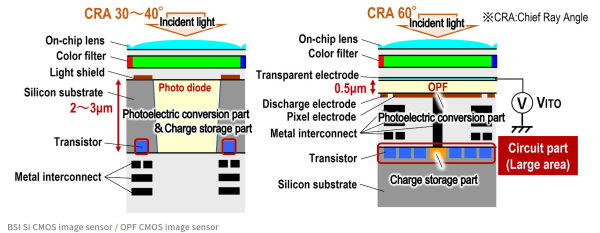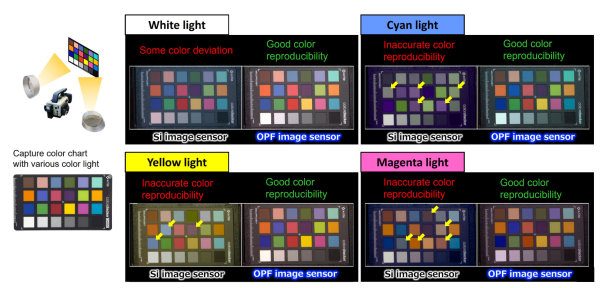[15:47 Mon,20.March 2023 by Rudi Schmidts] |
Panasonic already started developing "organic sensors" about 10 years ago, which were said to have outstanding properties. Now the Japanese are speaking out once again, and for once this new advance is not about dynamics, but about color fidelity.  The photoelectric conversion part (i.e. the part of the sensor that converts light into an electrical signal) is an organic thin film that has special properties. Since the OPF layer has a high light absorption rate, the area for photoelectric conversion can be much smaller. This in turn indirectly ensures better color separation. In addition, the smaller area allows discharge electrodes to be placed at the sensor boundaries, which effectively suppresses or minimizes crosstalk from neighboring cells. This is partly because it suppresses the transmission of light through the photoelectric conversion section. According to Panasonic, the particularly accurate color reproduction could be used especially well for treating skin diseases, monitoring health conditions and inspecting fruits and vegetables. Combined with the high dynamic range and global shutter function, the sensor is said to be particularly tolerant of changes in the type of light source, illuminance and speed.  Panasonic lists commercial broadcast cameras, surveillance cameras, industrial inspection cameras, and automotive cameras as areas of application. Which, conversely, means we probably won&t see this technology as cinematic large-scale sensors anytime soon. But perhaps their properties will make them very potent suppliers for "computational videography"? deutsche Version dieser Seite: Panasonic: Neuer organischer Sensor liefert verbesserte Farbwiedergabe |





